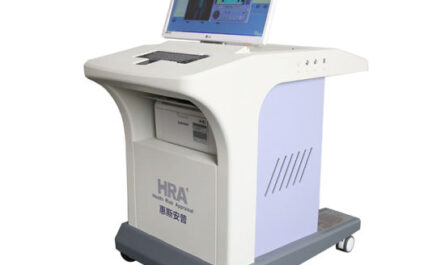
Interventional neurology is a subspecialty of neurology that focuses on minimally invasive image-guided procedures to diagnose and treat various neurological conditions. Using real-time imaging like fluoroscopy and angiography, interventional neurologists are able to access the brain, spine, and vascular structures through small catheters inserted through the skin rather than needing open surgery. Some of the main techniques and procedures employed in interventional neurology include:
Endovascular Treatment of Stroke
One of the most common applications of interventional neurology is in the treatment of acute ischemic stroke. A stroke occurs when blood flow to the brain is interrupted, such as from a blood clot in an artery supplying the brain. Traditionally, the only FDA-approved treatment was intravenous tissue plasminogen activator (tPA), a clot-busting drug, but it must be given within 4.5 hours of symptom onset and is only suitable for around 5-8% of stroke patients.
Interventional techniques can be used to mechanically remove or dissolve clots much later after symptom onset. The most widely used is intra-arterial thrombolysis where a catheter is threaded into the blocked artery and clot-dissolving drugs like tPA are infused directly at the site of occlusion. This allows much higher concentrations of the drug to reach the clot while avoiding systemic effects. Other methods include thrombectomy where devices like stents or catheters are used to physically remove the clot.
Many randomized controlled trials over the past decade have demonstrated the benefits of endovascular treatment over standard medical management alone. When performed within 6-24 hours of onset, endovascular thrombectomy can significantly improve functional outcomes and reduce disability in large vessel occlusion strokes. As a result, it is now the standard of care for eligible patients presenting within 6 hours and is being extended out to 24 hours in some large clinical trials.
Treatment of Brain Aneurysms
An intracranial aneurysm is a balloon-like bulge or swelling in a blood vessel in the brain. Most are asymptomatic but there is a risk they could rupture and cause a life-threatening subarachnoid hemorrhage. Interventional techniques allow for both diagnostic angiograms to detect unruptured aneurysms as well as various endovascular treatments to occlude the aneurysm from within and prevent further bleedingrisk.
Coiling or stent-assisted coiling involves using a catheter to deliver tiny platinum coils into the aneurysm. As more coils are packed in, they eventually stimulate blood clot formation to permanently seal off the bulge from circulation. This is now the standard first-line treatment for most unruptured and ruptured aneurysms that are anatomically amenable. Flow diverters like the Pipeline Embolization Device are self-expanding stents specifically designed to occlude wide-neck aneurysms by diverting blood flow away from the sac. For difficult cases, balloon-assisted coiling may be done where balloons temporally occlude the parent artery during coiling. Surgery is now usually reserved for giant or complex aneurysms.
Treatment of Cerebral AVMs
Cerebral arteriovenous malformations (AVMs) are congenital lesions where abnormal tangles of blood vessels directly connect arteries and veins in the brain without an intervening capillary bed. Left untreated, they carry risks of bleeding, seizures, and headaches. Interventional techniques allow for both embolization to reduce the blood supply to the AVM as well as Onyx injections directly into the AVM nidus to stimulate thrombosis.
The goal is usually to make the AVM safer for either radiosurgery or microsurgery. Techniques may include balloon-assisted or stent-assisted coiling of major feeding vessels as well as Onyx injections through small catheters. Complete obliteration of the AVM through embolization alone is challenging but can be effective for smaller lesions. Combined with radiosurgery, it significantly increases obliteration rates. For those not candidates for other therapies due to risks, repeated embolizations may still reduce the size and bleeding risk over time.
Treatment of Spinal Vascular Malformations
The spinal cord and cauda equina can also be affected by vascular lesions like arteriovenous malformations, dural arteriovenous fistulas, and perimedullary fistulas which sometimes cause progressive myelopathy if untreated. Using real-time fluoroscopic imaging, interventionalists can access these lesions percutaneously through the femoral or radial arteries.
Embolization techniques parallel those used for brain AVMs, using liquid embolics like Onyx, coils, or plugs to occlude the abnormally connected vessels. This decreases blood flow and reduces risks of future hemorrhage prior to either further endovascular treatment or radiosurgery. As with brain AVMs, the goal is usually to make the malformation safer rather than necessarily aiming for complete obliteration in one setting due to risks of spinal cord ischemia. Outcomes depend on the specific type, size, and location of the lesion.
Future Advances in Interventional Neurology
The field of interventional neurology is rapidly evolving. Techniques to access previously difficult to treat vascular lesions are improving as catheters, stents, and embolic agents advance. New mechanical thrombectomy devices are streamlining stroke treatment. Flow diverting stents are expanding the types of cerebral aneurysms that can be treated without OPEN surgery. Newer liquid embolics like PHIL and INop are being studied for embolizing more complex lesions.
Combinations with non-invasive modalities like MR-guided focused ultrasound are being pioneered for functional disorders. Cell-based therapies may someday treat neurodegenerative diseases. Wearable sensors, artificial intelligence, and digital diagnostics will likely complement imaging-guided procedures. With continued technological innovation and growth of the endovascular skillset, interventionalists are poised to offer less invasive solutions for an increasing number of previously surgically managed neurological conditions. The future of interventional neurology remains promising.
*Note:
1. Source: Coherent Market Insights, Public sources, Desk research
2. We have leveraged AI tools to mine information and compile it



